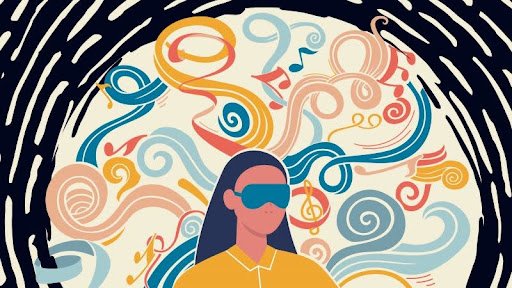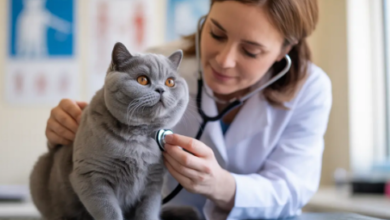Microdosing Psilocybin: Exploring the Intersection of Psychedelics and Medicine

Microdosing psilocybin has gained increasing attention in recent years, both within scientific communities and popular culture. As the therapeutic potential of psychedelics unfolds, many are turning to this practice as a way to improve mental health, creativity, and overall well-being without experiencing intense psychedelic effects. This article will explore what microdosing psilocybin involves, its potential benefits, and how it fits into the broader landscape of psychedelics and medicine.
What is Microdosing Psilocybin?
Microdosing psilocybin refers to the practice of consuming very small, sub-perceptual doses of psilocybin-containing mushrooms. These doses are typically about 1/10th to 1/20th of a typical recreational dose—so low that the user does not experience a full psychedelic trip. Instead, the goal is to subtly enhance mood, cognition, and creativity without impairing daily functioning.
Psilocybin is the active compound found in certain species of psychedelic mushrooms, often referred to as “magic mushrooms.” When ingested in larger doses, psilocybin causes profound changes in perception, thought, and emotion. However, microdosing aims to harness some of the beneficial effects of psilocybin without the intense psychedelic experience.
How is Microdosing Practiced?
People who microdose usually take small amounts of dried psilocybin mushrooms or psilocybin extract on a regular schedule—commonly every three days or every other day. The idea is to allow the body and mind time to integrate the subtle effects without building up tolerance or experiencing overwhelming changes.
A typical microdose might be around 0.1 to 0.3 grams of dried mushrooms, although the exact amount varies depending on the individual’s body weight, sensitivity, and goals. Many users report tracking their mood, productivity, and overall wellness to find an ideal dosage and schedule.
Potential Benefits of Microdosing Psilocybin
While research is still in its early stages, anecdotal reports and preliminary studies suggest several possible benefits from microdosing psilocybin:
1. Improved Mood and Reduced Anxiety
Many users claim microdosing helps lift mood and reduce symptoms of anxiety and depression. Some suggest that psilocybin’s interaction with serotonin receptors in the brain may promote neuroplasticity, helping to “reset” negative thought patterns.
2. Enhanced Creativity and Focus
Microdosers often report increased creativity, mental clarity, and focus. This can be especially appealing for people working in creative industries or those seeking cognitive enhancement.
3. Increased Emotional Resilience
Some people find that microdosing helps them handle emotional stress better and improves their overall sense of well-being.
4. Reduced Substance Use
There is emerging evidence that psilocybin and other psychedelics might help people reduce dependence on alcohol, nicotine, and other substances by altering addictive pathways in the brain.
The Science Behind Psilocybin and Brain Function
Psilocybin works by converting into psilocin in the body, which then binds to serotonin receptors, especially the 5-HT2A receptor, found throughout the brain. This interaction leads to increased communication between different brain regions that typically do not talk to each other.
This enhanced connectivity is thought to underlie many of the subjective effects of psychedelics, such as altered perception and expanded consciousness. Importantly, the ability of psilocybin to promote neuroplasticity—the brain’s ability to reorganize itself—has captured the interest of neuroscientists studying depression, PTSD, and other mental health disorders.
Microdosing vs. Macrodosing: Key Differences
It’s important to distinguish microdosing from the more traditional psychedelic “macrodose.” Macrodoses involve consuming larger amounts of psilocybin, usually leading to a full psychedelic experience lasting several hours, characterized by intense visual and sensory changes, ego dissolution, and deep introspection.
Microdosing, on the other hand, aims to provide subtle improvements in mood and cognition without hallucinations or altered states of consciousness. The risks and side effects also tend to be milder with microdosing, making it more accessible for daily use or long-term practice.
Psychedelics and Medicine: The Growing Therapeutic Landscape
The increasing interest in microdosing psilocybin is part of a larger revival in the study of psychedelics and medicine. After decades of prohibition and stigma, scientific research on psychedelics has surged in the last two decades, revealing promising therapeutic potential.
Medical Research and Psilocybin
Clinical trials have demonstrated that psilocybin-assisted therapy can be effective in treating treatment-resistant depression, end-of-life anxiety, PTSD, and addiction. Institutions like Johns Hopkins, Imperial College London, and MAPS (Multidisciplinary Association for Psychedelic Studies) are leading groundbreaking research into the safety and efficacy of these compounds.
Psychedelic-Assisted Therapy
In a medical context, psilocybin is often administered in controlled settings combined with psychotherapy. This therapeutic model helps patients process traumatic memories, break free from destructive thought patterns, and experience lasting psychological breakthroughs.
Regulatory Progress
In recent years, some regions have begun to loosen restrictions on psilocybin for therapeutic use. Oregon, for example, became the first U.S. state to legalize psilocybin-assisted therapy in 2020. Similar movements are underway globally, signaling a major shift in how psychedelics are viewed in medicine.
Challenges and Considerations of Microdosing Psilocybin
Despite growing enthusiasm, microdosing psilocybin is not without challenges and risks.
Lack of Standardization and Research
Currently, there is limited rigorous scientific research specifically on microdosing. Most evidence is anecdotal, and placebo-controlled studies are only just beginning. This makes it difficult to establish standardized dosing guidelines or understand long-term effects fully.
Legal and Ethical Issues
Psilocybin remains illegal in many countries, making access to safe, pure substances a challenge. Legal consequences, as well as variability in mushroom potency, pose risks to users.
Potential Side Effects
While microdosing is generally considered safe, some users report side effects such as anxiety, restlessness, or physical discomfort. It’s also important to consider possible interactions with other medications or underlying health conditions.
Conclusion: The Future of Microdosing Psilocybin in Medicine
Microdosing psilocybin represents a fascinating frontier at the crossroads of psychedelics and medicine. As scientific understanding grows, this practice may become a powerful tool for mental health, creativity, and personal growth. However, caution, further research, and legal reforms are essential to fully realize its benefits and ensure safe, ethical use.
As we continue to explore the mysteries of the brain and mind, microdosing psilocybin could play a pivotal role in transforming how we approach wellness and healing in the 21st century.



